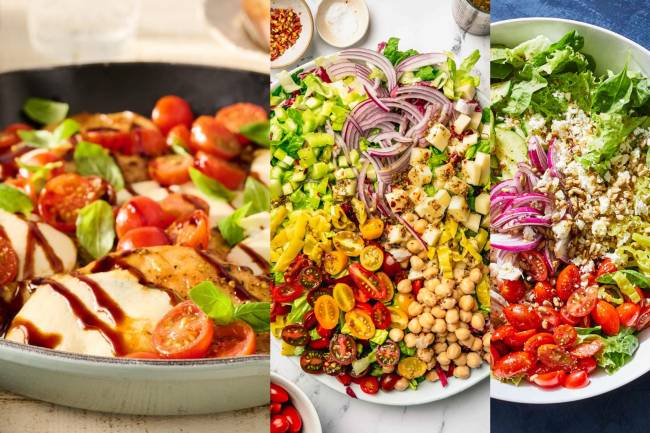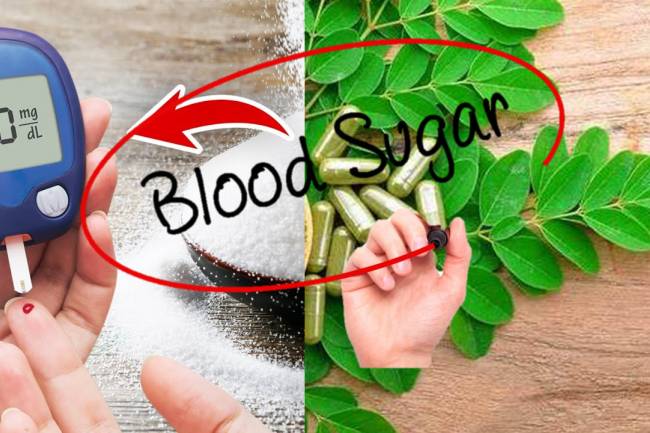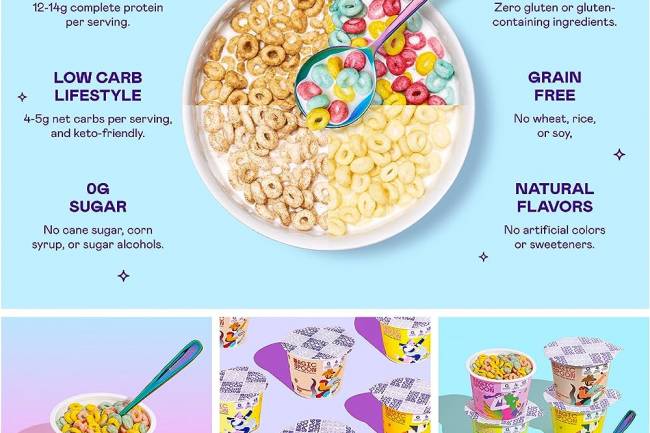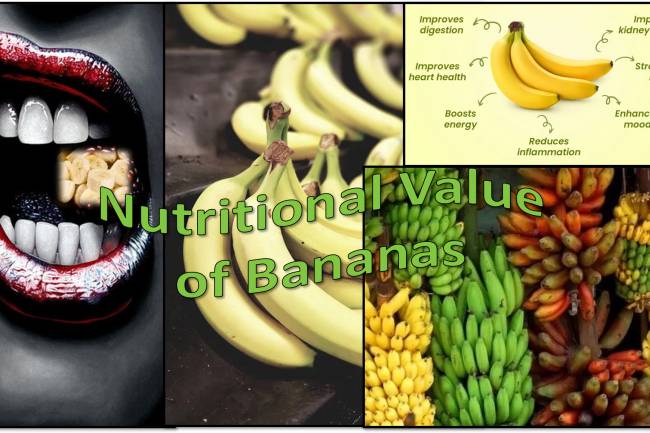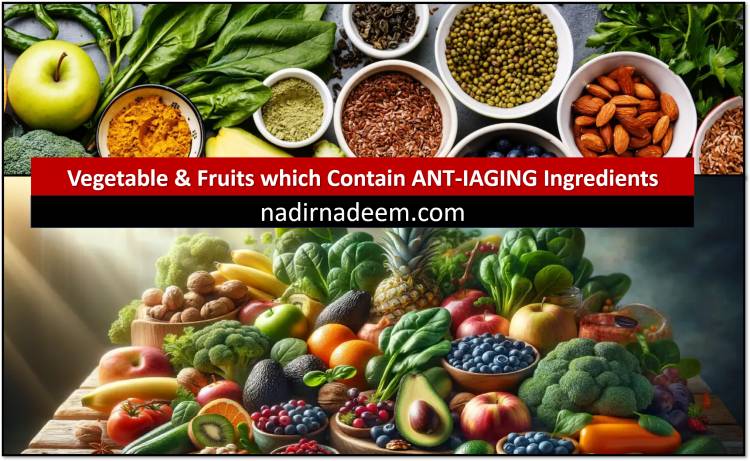
Which vegetables and fruits contain anti-aging ingredients?
Which vegetables and fruits contain anti-aging ingredients?
Many vegetables and fruits contain anti-aging ingredients that promote healthy skin and overall health.
Contents
Which vegetables and fruits contain the anti-aging ingredient HYALURONIC ACID?. 2
Vegetables with (HYALURONIC ACID): 3
Fruit (with HYALURONIC ACID): 3
Which vegetables and fruits contain anti-aging PEPTIDES?. 3
Which vegetables and fruits contain Niacinamide (VITAMIN B3) 4
Vegetables (with Niacinamide -Vitamin B3): 4
Fruits (with Niacinamide -Vitamin B3): 4
Which vegetables and fruits contain COENZYME Q10 (CoQ10) 5
Which vegetables and fruits contain COLLAGEN.. 5
Which vegetables and fruits contain VITAMIN C (ASCORBIC ACID)?. 6
Vegetables (with ascorbic acid): 6
Which vegetables and fruits contain Retinoids (retinol)?. 7
Vegetables (high in carotenoids): 7
Fruits (high in carotenoids): 7
Which vegetables and fruits contain ALPHA HYDROXY ACIDS (AHAS) 8
Vegetables that contain AHAs: 8
Related Topics
Most Effective Anti-Aging Ingredients for Your Skin
Expert’s Opinions On Anti-Aging Ingredients
Question & Answer About Antiaging Ingredients for human skin
Here are some examples:
Vegetables:
Spinach: Rich in vitamins A, C, and E, which help repair skin cells and provide antioxidant protection.
Broccoli: Contains sulforaphane, vitamin C, and beta-carotene, which support healthy skin and collagen production.
Tomatoes: Rich in lycopene, a powerful antioxidant that protects against sun damage and skin aging.
Carrots: Packed with beta-carotene and vitamin A, which help maintain healthy skin and reduce wrinkles.
Bananas: Packed with vitamins A, C, and K, they provide antioxidant protection and support collagen production.
Sweet potatoes: Covers beta-carotene, which aids defend skin from sun harm and helps a healthy complexion.
Red bell pepper: Rich in vitamin C and carotenoids, which stimulate collagen production and fight free radicals.
Avocado: Rich in healthy fats and vitamins E and C, which moisturizes and protects the skin.
Fruit:
Blueberries: Packed with antioxidants, especially anthocyanins, which help fight free radicals and reduce signs of aging.
Strawberries: Rich in vitamin C, which helps in collagen production and protects against skin damage.
Pomegranate: Contains pink agents and antioxidants that help preserve collagen and protect the skin from aging.
Oranges: Rich in vitamin C, which helps in collagen synthesis and skin repair.
Papaya: Contains vitamins A, C, and E, as well as enzymes like papain, which increase skin elasticity and reduce wrinkles.
Kiwi: Rich in vitamin C and antioxidants that help in collagen production and skin renewal.
Grapes: Contains resveratrol and antioxidants that protect the skin from sun damage and signs of aging.
Apples: Rich in vitamin C and antioxidants, they promote collagen production and skin elasticity.
Which vegetables and fruits contain the anti-aging ingredient HYALURONIC ACID?
Hyaluronic acid is “not naturally present in significant amounts in fruits and vegetables”, as it is primarily produced by the body or obtained through supplements and skin care products. However, certain foods may support the body's production of hyaluronic acid or contribute to skin health and hydration, indirectly helping to prevent aging. These include:
Vegetables with (HYALURONIC ACID):
Green leafy vegetables (spinach, kale): rich in magnesium, which helps in hyaluronic acid production.
Root vegetables (sweet potatoes, carrots): Contain antioxidants and vitamins that support hydration and skin health.
Soy-based foods (tofu, edamame) - contain isoflavones that help maintain the body's hyaluronic acid levels.
Broccoli - provides vitamin C and other nutrients that promote healthy skin.
Beets: Rich in antioxidants and nutrients that promote skin hydration.
Fruit (with HYALURONIC ACID):
Citrus fruits (oranges, grapes): Rich in vitamin C, which helps in the production of collagen and hyaluronic acid.
Berries (blueberries, strawberries): Contain antioxidants that protect the skin and promote hydration.
Bananas: Provide magnesium, which is essential for the synthesis of hyaluronic acid.
Avocados: Rich in healthy fats that promote skin hydration and elasticity.
Grapes: Contains resveratrol, which promotes skin health and hydration.
Note: Although “these foods do not contain hyaluronic acid directly”, they contribute to the overall health of the skin and can help the body's natural production and maintenance of hyaluronic acid.
Which vegetables and fruits contain anti-aging PEPTIDES?
Peptides are short chains of amino acids that are also “not found directly in fruits and vegetables and are commonly used in skin care.” However, certain vegetables and fruits contain nutrients that support the body's natural peptide production or provide essential amino acids for collagen and protein synthesis, which contribute to healthy and aging skin.
Vegetables (with Peptides):
Legumes and legumes (lentils, chickpeas): rich in protein, they provide essential amino acids for producing peptides.
Spinach: rich in amino acids such as glycine and proline, which are important for collagen production.
Broccoli: contains sulfur-rich compounds that support collagen and peptide production.
Bananas: provide essential amino acids and antioxidants that promote skin health.
Mushrooms: especially rich in amino acids that support protein and peptide synthesis.
Fruits (with Peptides):
Avocado: Rich in healthy fats and amino acids, which support collagen and peptide production.
Citrus fruits (oranges, lemons): Rich in vitamin C, which is important for collagen synthesis and supports peptide function.
Berries (blueberries, strawberries): Contains antioxidants and vitamins that aid in collagen and peptide formation.
Papaya: Provides enzymes and amino acids that support healthy skin and collagen production.
Kiwi: Rich in vitamin C and other nutrients that aid in collagen production, indirectly supporting peptide synthesis.
“These fruits and vegetables support the body’s ability to naturally produce peptides by providing essential nutrients, such as amino acids, vitamins, and antioxidants, that are necessary to maintain skin health and fight aging”
Which vegetables and fruits contain Niacinamide (VITAMIN B3)
Niacinamide, also known as vitamin B3, is found in a variety of foods, including certain vegetables and fruits. Here are some examples:
Vegetables (with Niacinamide -Vitamin B3):
Mushrooms (Portobello, Shiitake): Rich in niacin, they contribute to vitamin B3 levels in the body.
Peas: Provide good amounts of niacinamide, which supports overall skin health.
Potato, especially the skin, contains niacinamide.
Asparagus: Contains niacinamide along with other vitamins beneficial for skin health.
Broccoli: Provides niacinamide along with other essential nutrients that support skin.
Fruits (with Niacinamide -Vitamin B3):
Avocado: Rich in niacinamide and healthy fats, supports hydration and skin health.
Mango: Contains niacinamide, which can help with skin glow and overall health.
Tomatoes: Although technically a fruit, they are packed with niacinamide and other skin-healthy nutrients.
Bananas: Provide niacinamide, which contributes to overall skin and cellular health.
Dates: Contains niacinamide and other essential vitamins.
Which vegetables and fruits contain COENZYME Q10 (CoQ10)
Coenzyme Q10 (CoQ10) is a compound that plays an important role in energy production within cells and acts as an antioxidant. While CoQ10 is found in a variety of foods, it is present in relatively low amounts in fruits and vegetables compared to meat and seafood. However, some fruits and vegetables do contain CoQ10, including:
Vegetables (with CoQ10):
Spinach: A good source of CoQ10, as well as other vitamins and minerals.
Broccoli: Contains moderate levels of CoQ10 along with fiber and vitamins.
Cabbage: Another cruciferous vegetable that provides CoQ10.
Parsley: High in antioxidants, including small amounts of CoQ10.
Brussels sprouts: Contains CoQ10 and other beneficial compounds.
Sweet peppers: Especially red peppers, which contain some CoQ10.
Fruit (with CoQ10):
Strawberries: Among fruits, strawberries are relatively high in CoQ10.
Oranges: Citrus fruits like oranges contain small amounts of CoQ10.
Avocados: Rich in healthy fats and contain some CoQ10.
Grapes: Especially red grapes, which contain small amounts of CoQ10.
Although these foods provide CoQ10, the amounts are relatively small and people who want to increase their CoQ10 levels often turn to supplements or eat more CoQ10-rich foods, such as organ meats and fatty fish.
Which vegetables and fruits contain COLLAGEN
Collagen is a protein found primarily in animal products, as it is a major component of animal connective tissues. However, certain fruits and vegetables can support the body's natural collagen production by providing essential nutrients such as vitamin C, amino acids, and antioxidants. Although plant-based foods do not contain collagen, they can help the body produce and maintain it. Here are some fruits and vegetables that help with collagen production:
Vegetables (with Collagen):
Green leafy vegetables (spinach, kale): Rich in vitamin C and antioxidants, which are important for collagen synthesis.
Broccoli: Rich in vitamin C and other nutrients that help stimulate collagen production.
Bell peppers (especially red): Rich in vitamin C, which is essential for collagen production.
Tomatoes: Rich in vitamin C and lycopene, an antioxidant that helps prevent collagen breakdown.
Carrots: Provides vitamin A, which helps restore and regenerate damaged collagen.
Sweet Potatoes: Rich in vitamin A, they promote collagen synthesis in the skin.
Garlic: Contains sulfur, which is essential for collagen production and helps prevent its breakdown.
Fruit (with Collagen):
Citrus fruits (oranges, lemons, limes, grapefruits): packed with vitamin C, which is essential for collagen production.
Berries (strawberries, blueberries, raspberries): rich in vitamin C and antioxidants that protect collagen from damage.
Papaya: Rich in vitamin C and other antioxidants that help in collagen formation.
Kiwi: Contains significant amounts of vitamin C, which helps in collagen production.
Pineapple: Contains vitamin C and bromelain, an enzyme that can help synthesize collagen.
Guava: Excellent source of vitamin C, helps in collagen synthesis.
Additional Nutrients:
Copper: Copper is found in nuts, seeds, and legumes and is essential for collagen production.
Zinc: Zinc found in foods like pumpkin seeds, beans, and lentils plays a role in collagen synthesis.
These fruits and vegetables do not contain collagen directly, but they do provide essential nutrients to boost the body's natural collagen production.
Which vegetables and fruits contain VITAMIN C (ASCORBIC ACID)?
Vitamin C, also known as ascorbic acid, is an essential nutrient that supports the immune system, aids in collagen production, and acts as an antioxidant. It is found in many types of fruits and vegetables.
Here are some great sources:
Vegetables (with ascorbic acid):
Bell peppers (especially red and yellow): one of the richest plant sources of vitamin C.
Broccoli: A cruciferous vegetable rich in vitamin C.
Brussels sprouts: Extra cruciferous vegetable ironic in vitamin C.
Banana: This leafy green is packed with vitamin C, among other nutrients.
Spinach: Contains good amounts of vitamin C, plus iron and other vitamins.
Tomatoes: Tomatoes are a good source of vitamin C, especially in their raw form.
Cabbage: Contains vitamin C, especially when eaten raw or lightly cooked.
Cabbage: Both green and red varieties of cabbage contain vitamin C.
Potatoes (especially sweet potatoes and yams): Provide vitamin C, especially when eaten with the skin.
Fruit (with ascorbic acid):
Citrus fruits (oranges, lemons, limes, grapefruit): Classic sources of vitamin C.
Strawberries: One of the richest fruits in vitamin C.
Kiwi: Contains more vitamin C per gram than oranges.
Papaya: Tropical fruit rich in vitamin C.
Pineapple: Another tropical fruit rich in vitamin C.
Mango: Contains good amounts of vitamin C.
Guava: An excellent source of vitamin C, even more than most citrus fruits.
Berries (blueberries, raspberries, blackberries): Contains moderate amounts of vitamin C.
Melon (cantaloupe, watermelon): Provides a refreshing source of vitamin C.
These fruits and vegetables are great choices to make sure you get enough vitamin C in your diet.
Which vegetables and fruits contain Retinoids (retinol)?
Retinoids, including retinol, are a form of vitamin A found primarily in animal foods. However, plant-based foods contain carotenoids, such as beta-carotene, which the body can convert into retinol (vitamin A). Although you won't find retinol in fruits and vegetables, these plant foods are rich in carotenoids that support vitamin A levels.
Vegetables (high in carotenoids):
Carrots: One of the best sources of beta-carotene, which the body converts into vitamin A.
Sweet potatoes: Full with beta-carotene, particularly the orange-fleshed varieties.
Squash: Rich in beta-carotene, especially when cooked.
Spinach: Contains beta-carotene along with other important nutrients.
Banana: A leafy green that is a good source of beta-carotene.
Pumpkin: Rich in beta-carotene, which provides lots of vitamin A.
Red and orange bell peppers: These peppers are rich in beta-carotene.
Collard greens: Another leafy green rich in carotenoids.
Broccoli: Contains good amounts of beta-carotene and other nutrients.
Fruits (high in carotenoids):
Mango: Tropical fruit rich in beta-carotene.
Cantaloupe: This melon is a good source of beta-carotene.
Apricots: Rich in beta-carotene, especially when dried.
Papaya: Contains a significant amount of beta-carotene.
Peaches: Provide beta-carotene, especially when fresh.
Guava: Contains beta-carotene, which contributes to vitamin A content.
Watermelon: Although not as much as others, it still provides beta-carotene.
Grapefruit (pink or red): Contains lycopene and beta-carotene, both of which can contribute to vitamin A levels.
Although retinol is found directly in animal products such as liver, fish, and eggs, consuming the fruits and vegetables mentioned above can help increase vitamin A levels in the body through their rich carotenoid content.
Which vegetables and fruits contain ALPHA HYDROXY ACIDS (AHAS)
Alpha hydroxy acids (AHAs) are a group of natural acids often used in skin care products for their exfoliating properties. AHAs are commonly found in various fruits and vegetables. Here are some basic sources:
Vegetables that contain AHAs:
Tomatoes: As mentioned above, tomatoes are a good source of malic and citric acid.
Sugar beets: Source of glycolic acid, although less often used directly.
Carrots: Contains small amounts of AHAs, including citric acid.
Pumpkin: Contains citric and malic acids, which contribute to its AHA content.
Fruits that contain AHAs:
Citrus fruits (oranges, lemons, limes, grapefruits): Rich in citric acid, a type of AHA that helps lighten skin.
Apples: Contains malic acid, an AHA known for its gentle exfoliating properties.
Grapes: Especially green, unripe grapes, which contain tartaric acid, another type of AHA.
Pineapple: Contains a mix of AHAs, including citric and malic acids.
Papaya: Rich in various AHAs, including citric acid, and contains an enzyme called papain, which has exfoliating properties.
Tomatoes: Contains malic and citric acids, which contribute to its AHA content.
Sugarcane: Not commonly consumed as a fruit, but sugarcane juice is rich in glycolic acid, one of the most effective AHAs.
Blueberry: Like blueberries, cranberries are high in citric acid and other AHAs.
Peaches: Contains malic acid, which contributes to its AHA content.
Although AHAs are most commonly associated with skin care, they are found naturally in fruits and vegetables. When used topically, their presence can contribute to gentle skin exfoliation, although the concentration in foods is generally lower than that found in skin care products.
Related Topics
Most Effective Anti-Aging Ingredients for Your Skin
Expert’s Opinions On Anti-Aging Ingredients
